Get In Touch
Contact Thrive Treatment to learn more about our innovative substance abuse, dual-diagnosis & mental health treatment programs for teens, young adults, & adults in Los Angeles, California.





Opioid addiction is a destructive disease that affects millions of Americans, characterized by compulsive use of illicit opioids or prescription opioids for pain management used outside the direction of a medical professional. This addiction comes with a myriad of mental, emotional, and physical health risks, along with intense urges, cravings, or withdrawal symptoms. Those living with opioid addiction or opioid use disorder (OUD) may continue to engage with various forms of opioids, from street-level opioids like heroin and fentanyl to prescription drugs, despite mounting destructive effects or concerns from friends, family members, and loved ones.
Oxycodone, codeine, hydrocodone, and more are all incredibly addictive opioids, with street-level opioids often cut with an array of different substances to increase their potency or destructive effects. Prolonged or misuse of opioids can hijack the brain’s “reward system” and force the release of dopamine. Over time, more and more of these drugs are necessary to achieve the same effects, leading to dependence on opioids to feel “normal.” Overcoming opioid addiction is complicated and takes a lot of hard work and dedication. However, with the right support and trained, professional care, transformative addiction recovery is possible, and Thrive Treatment is available to help you take your first step towards an opioid-free future today.
Opioids can be devastating to the health of an individual while also being a destructive force for entire families and communities. The opioid epidemic continues to affect millions across the country, with an estimated 2.7 million people living with opioid addiction, according to a study in 2020. Overprescription of opioids led to widespread addiction and an increase in opioid use disorder, with many of those prescribed these addictive drugs transitioning to street-level opioids or illicit options when their prescription runs out, bringing new risks and dangers, including increasing the risk of overdose.
Nobody is immune to any form of addiction, especially when opioids are involved. The effects of the opioid epidemic in Southern California continue to affect thousands of families across the state. In 2021 alone, there were over 10,000 drug overdose deaths across the state, with about 65% of these involving opioids, especially dangerous and potent substances like fentanyl. This is possible whether it was being taken deliberately or the drug was unknowingly cut into other substances, including other opioids or even drugs like marijuana. Recognizing potential signs of opioid use and addiction is paramount to taking action and addressing OUD, as well as taking your first step into an effective, dedicated opioid treatment program.
Recognizing the signs and symptoms of opioid addiction is the first step in finding help for overcoming substance abuse and engaging in an effective treatment program at Thrive Treatment or your local facility. Some of the most common signs of opioid use include:
OUD also profoundly impacts the body. Sudden weight changes, especially weight loss, fatigue, pinpoint pupils, gastrointestinal issues, nausea, vomiting, and more, are all common in those living with an addiction to opioids. Those injecting opioids can also have physical signs of use in “track marks” or small puncture wounds at injection sites that leave redness, scabs, and bruising. Unsafe and unsanitary drug use can also lead to infection, in addition to a compromised immune system, making these physical effects of opioids more difficult to overcome.
Likewise, you don’t necessarily have to actively see a loved one using opioids to find signs of opioid use, as the use of these drugs can also bring a myriad of behavioral changes. These can include:
These can all indicate a preoccupation with finding and using opioids. Those living with prescription opioid addiction can also engage in “doctor shopping.” This is going to multiple doctors in an attempt to procure multiple prescriptions. An individual may have multiple prescriptions or go through prescriptions faster than expected or directed, indicating an unhealthy relationship with opioids.
While those living with opioid addiction may commonly exhibit both physical dependence and signs of addiction, there is a key difference between the two. Physical dependence occurs when a person’s body becomes accustomed to the use of an addictive substance like opioids. The body may become reliant on these substances to feel “normal” and cause a person to experience withdrawal symptoms when stopping the use of opioids.
Addiction, however, is a mental health condition where the use of drugs impacts a person’s brain chemistry, commonly by hijacking the brain’s dopamine receptors and “reward” system in the brain. This is the part of OUD that brings intense cravings, mood swings, urges, and compulsive use of opioids despite having experienced negative consequences of drug use in the past or despite the concern of loved ones and family members.
Addressing both the physical and mental side of OUD is necessary for effective change, making the trained professionals and dedicated opioid addiction treatment program at Thrive Treatment an instrumental resource in sustainable change.
Thrive Treatment has been serving Los Angeles in overcoming opioid addiction, mental health disorders, and more by providing comprehensive care, community, and support to those ready to take their first step toward a sober life. Addiction is a destructive disease that affects all aspects of daily life. Thrive Treatment takes an equally comprehensive approach to your treatment program, blending evidence-based treatment with holistic healing options, community support, and more across the entire continuum of care, meeting you where you are in your recovery journey for long-term sober change.
Our dedicated care can support your healing from detox and residential programs to outpatient support. We also work closely with The Last House, a dedicated sober living community, to support your transition to a fulfilling daily opioid-free life.
At Thrive Treatment℠ we accept most private insurance plans and we are in network with Cigna, Optum, First Health, and Anthem Blue Cross. Additional payment options are available so don’t hesitate to give us a call so we can get you the help that you need.
1-855-232-1334












Overcoming addiction is a process, and there is no “quick fix” to the challenges of opioid addiction. Your recovery will take time and effort, with hurdles along the way. Thrive Treatment is available to help you or your loved one navigate each level of care for effective, sustainable, sober healing, as well as support you as you transition to new levels of care as you successfully meet new goals and milestones
The first step in any effective addiction recovery journey is detox. This is where you cease the use of opioids and expel any traces of these substances from your body. It is a difficult process and is when withdrawal symptoms can be at their most intense. Aches and pains, insomnia, anxiety, depression, and more are all common and challenging to your sobriety, making relapse common during this time when attempting to detox without support.
Thrive Treatment offers comprehensive care during our detox programs, providing emotional support to medical supervision to manage withdrawal symptoms, emotional challenges, and more. We also utilize medication-assisted treatment (MAT) to address specific symptoms of opioid withdrawal to empower you to navigate this time effectively.
These programs last about two weeks as you begin your sober journey, overcoming physical challenges, mental health challenges, and more while setting goals for your opioid-free life. This time is also personalized to your unique needs and experiences, ensuring that you are committed to your healing and progress from your very first step into treatment.
Thrive Treatment‘s dedicated PHP is designed to be a stepping stone between your residential treatment and outpatient care. These programs meet five days a week, for about six hours each session, to help you address new challenges that arise and continue to engage in a community of sober peers and professionals to build a sense of community in your sober journey.
Our PHP is a blend of proven, evidence-based care with experiential therapies and holistic healing options, empowering you to address the stresses of daily life outside the treatment facility while still benefitting from professional support. These programs also help you balance newfound freedoms and responsibilities in sobriety while exploring a daily structure for a successful transition to your own sober daily life.
Graduating from a detox, residential, or PHP program is an amazing accomplishment, but it is not the end of your opioid recovery journey. Rather, new stresses can arise at any time. Maintaining your sobriety from opioids takes continued refinement of dedicated coping strategies. Our outpatient programs are designed to help you at any stage of your recovery, meeting twice a week to provide continued support, guidance, accountability, and camaraderie.
Flexibility in meeting times also means you can always benefit from Thrive Treatment’s professional support even while tending to daily responsibilities, professional life, and more, further balancing your sober life with personal goals and responsibilities for a truly transformed sober life.
Thrive Treatment works alongside The Last House, a dedicated sober living community available to help you establish your daily sober life while engaging in a supportive and effective recovery community. Talking to a professional about your needs and goals can help you determine if The Last House is the right fit for your continued healing journey after detox and treatment, helping you further balance personal goals with sustainable sober support.
Not all recovery journeys will necessarily involve medication. However, for situations where withdrawal symptoms and mental health disorders are more severe, medication under the direction of a medical professional at Thrive Treatment can help alleviate some symptoms and challenges associated with opioid addiction and withdrawal.
While medication can be a great tool for supporting your recovery efforts, it is not a replacement for your own daily effort and dedication or for other coping strategies and therapy. Using medication to address specific symptoms and challenges throughout opioid recovery while working with professionals can create an effective, holistic approach to change while promoting long-term sobriety alongside other proven therapies.
While it is common to still experience urges and cravings at any stage of recovery, even as a sober alumnus, MAT can be instrumental in helping you maintain your hard-earned sober change. During detox, the use of medication to address opioid withdrawal symptoms can help you navigate this difficult time more effectively while exploring personal needs and goals and transitioning to further levels of care. While medication cannot completely eliminate urges or the need for professional care, it can provide an additional layer of support to empower you to better engage in dedicated therapies and individual and group programs throughout your recovery.
Likewise, medication to address mental health needs can also help reduce triggering events. Anxiety, depression, and more can all be closely tied to the use of opioids as a coping strategy. Working with both mental health professionals at Thrive Treatment and medication to address particular needs can provide a robust approach to your sustainable healing journey.
We also blend proven evidence-based treatment strategies like cognitive-behavioral therapy (CBT), dialectical behavior therapy (DBT), acceptance and commitment therapy (ACT), and much more for a comprehensive approach to understanding stress, its impact on your mental health and behavior, and providing you with the skills necessary to overcome these stressful events in your opioid-free life.
The use of medications like methadone, buprenorphine, suboxone, and naltrexone in MAT can be crucial in supporting your healing journey. These can work by either partially or fully blocking the opioid receptors in the brain, helping to reduce cravings. Medications like naltrexone can completely block off the effects of opioids, preventing the high and discouraging opioid use.
MAT can also help to alleviate pains associated with opioid use or chronic pain. For some, chronic pains can be tied to the use of opioids, particularly prescription opioids, with these pains being triggering and stressful for those pursuing a sober future. Mitigating pain and cravings can empower you to focus wholly on your personal development and practice coping strategies, engage with group therapy and experiential or holistic therapies, and make the most of each day at Thrive Treatment.
Maintaining your sobriety from opioids takes effort. However, your time at Thrive Treatment is spent not just addressing the immediate effects of opioid addiction but also building the skills and strategies necessary to manage a truly sober life. We work with you to create a relapse prevention strategy filled with personal coping strategies, communication skills, mindfulness practices, and holistic healing opportunities. Managing relapse also incorporates your personal support system, from the community at Thrive Treatment or The Last House to working with your family and loved ones in our family program to identify signs of potential relapse and engage in comprehensive change at home.
Building resilience in recovery is also a journey. Emotional resilience is the ability to “bounce back” from stressful events and challenges. There will be challenges along the way, and new stresses and challenges may arise at any point in your healing journey. Having the strategies to acknowledge stress, process it safely, and release this stress is crucial to prevent relapse and maintain a healthy emotional state. Mindfulness, self-care, communication, and problem-solving skills can all be instrumental in building resilience and maintaining your hard-earned sobriety.
Finding the right collection of strategies for managing stress throughout your healing from opioid addiction is a personal journey. We are prepared to help you cope with stress in a variety of ways to find what works best for you. These strategies include:
We also blend proven evidence-based treatment strategies like cognitive-behavioral therapy (CBT), dialectical behavior therapy (DBT), acceptance and commitment therapy (ACT), and much more for a comprehensive approach to understanding stress, its impact on your mental health and behavior, and providing you with the skills necessary to overcome these stressful events in your opioid-free life.

Co-occurring disorders are difficult to address. Overcoming both an opioid addiction and a mental health disorder like anxiety, depression, bipolar disorder, or even post-traumatic stress disorder (PTSD) is complicated, especially if a person turned to the use of opioids as a result of traumatic injury or events. Thrive Treatment offers holistic care, with dedicated mental health professionals ready to help you explore not just the effects of mental health disorders and addiction in your life but also how they can continue to inform each other in your journey.
There is never anybody who is beyond healing from mental health disorders or opioid addiction. Thrive Treatment is available to help you find the right combination of support, therapies, and community for your transformative healing, whether you are just beginning your healing journey or looking to find a new way to approach these challenges for a fulfilling, sustainable, and healthy daily life.
Overcoming opioid addiction takes a lot of effort, care, and support. We at Thrive Treatment are prepared to help you take your first step toward an opioid-free life in California. Learn how by calling us today at (855) 232-1344.
1-855-232-1334
